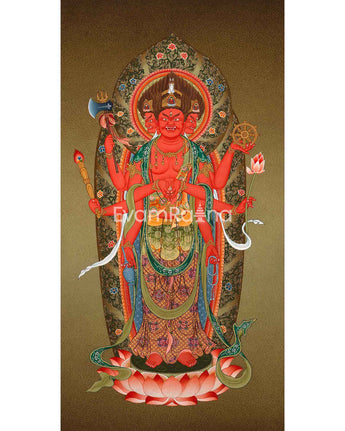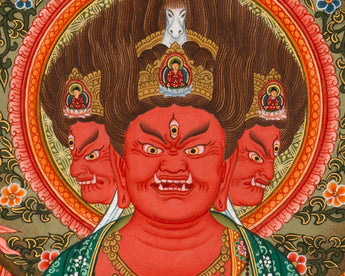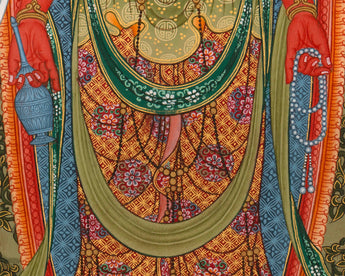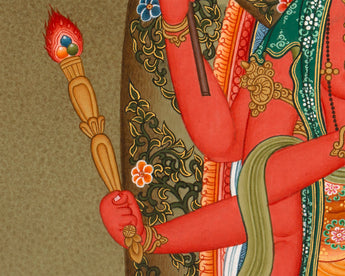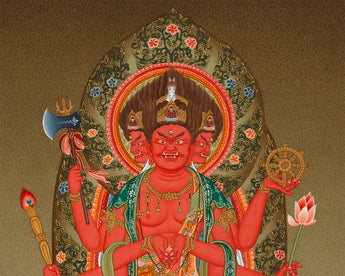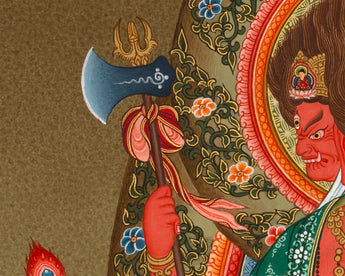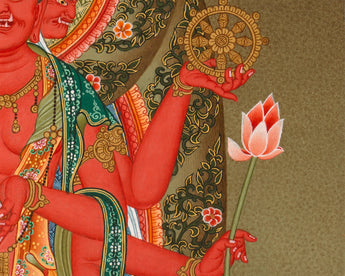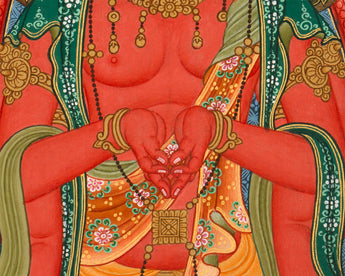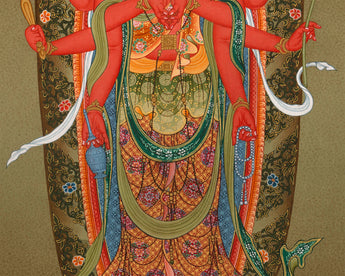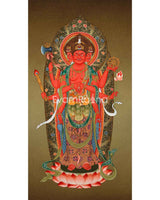
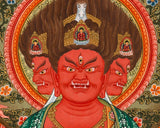
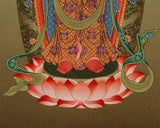
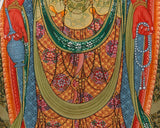
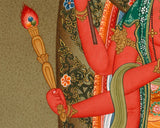
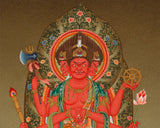
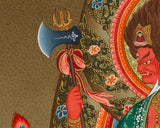
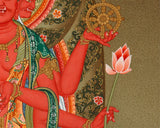
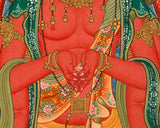
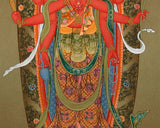
Hayagriva Horse Headed Kannon | Quality masterpiece Japanese Deity

100% AUTHENTIC

FREE SHIPPING
Hayagriva Headed Kannon
About Our Thangka Print :
Amoghasiddhi is associated with Vajrayana Buddhism and originates in the Tantric Literature of the Charya, Yoga, and Anuttarayoga Tantra classes. The sculptural images generally fall into two groups, either as Buddhas with monastic robes and without ornaments known as nirmanakaya appearance or Buddhas in Bodhisattva Appearance, also known as peaceful appearance, with crowns and ornaments - sambhogakaya appearance. He is most commonly depicted in the set of the Five Symbolic Buddhas
Rare Fine Masterpiece Quality Print- The bodhisattva with Horse Head:
Bato Kannon is the wrathful Incarnation of the Mahasattva Bodhisattva Avalokiteshvara of great compassion in Tantric Buddhism. In Japan, Bato Kannon has been termed the ‘Protector of Animals’
In Sanskrit, Bato Kannon means ‘Hayagriiva’ (transcription: 何耶掲梨婆), meaning ‘Horse Head.’ The ‘horse-headed Kannon is the only manifestation of Kannon expressing rage.’ Due to such nature, he is one of the Myoo Acala, Wisdom kings, warlike, wrathful deities of Esoteric Buddhism. For each of the six realms of existence (rokudō), the Bodhisattva of Compassion appears here as horse-headed Avalokiteshvara, one of six Avalokitesvaras.
Roku Kannon, six deities of mercy, was meant to save sentient beings of the six worlds: divine, heavenly beings (devas), demigods, Titans (asura), human beings, animals, starving spirits, and the damned. The Kannon saved not an only horse but also every Chikushodo (beasts). It is believed to guide and benefit the Chikushodo (the animal kingdom) among the Roku Kannon. Bato Kannon is dedicated to the animal world and is capped by the horse and flamed-haired.
How does Thangka benefit us?
It goes without saying that every detail of a painting has a symbolic meaning. Regardless of your religious affiliation, a thangka can help you on your path to enlightenment, whether you practice Buddhism or have other religious convictions. Thangkas are paintings that depict deities with various iconographic elements and symbolism that encourage meditation on the teachings of the god they depict. Any thangka is intended to aid in the removal of the film of ignorance, which is a significant barrier to the road to enlightenment. The Thangka is revered as a holy item. They promote positivity, spread Buddhism's teachings, bring about peace, harmony, and oneness, and dispel any negative energy that may be there.


